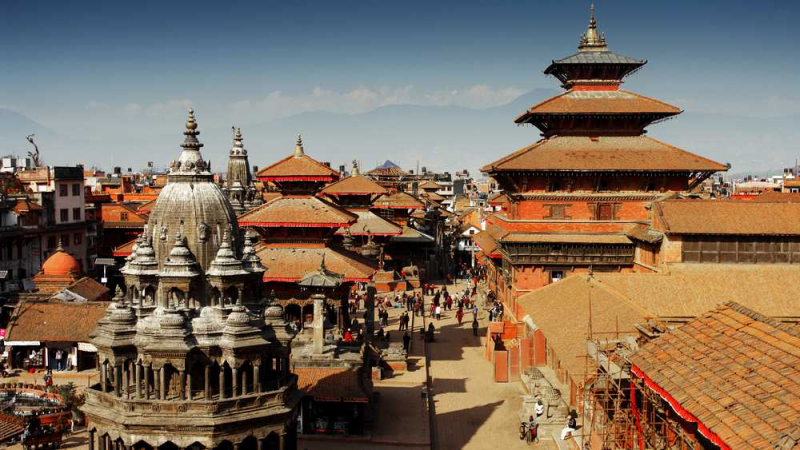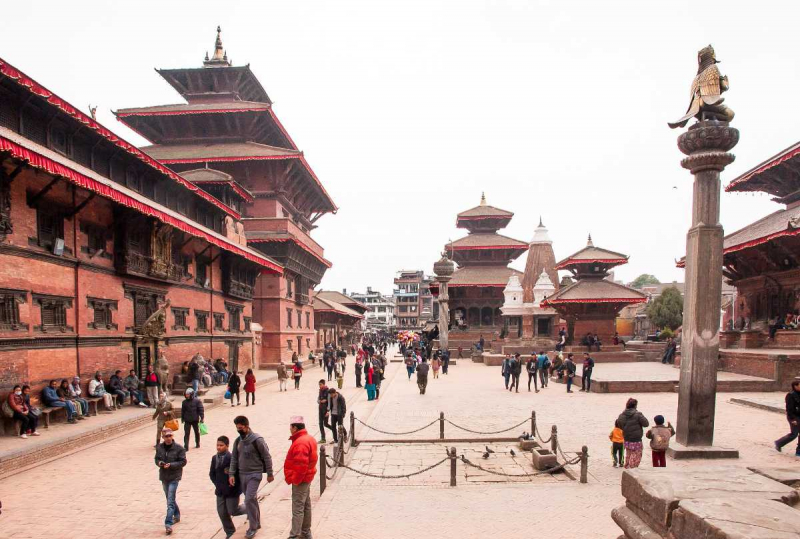Kathmandu Durbar Square
Durbar Square in Kathmandu is the place where new kings were crowned while the constant beats of drums and trumpets filled the area, which has seen and received one king after another as they sat and ruled over Nepal for a long time. One of the three durbar squares in Nepal is the majestic Kathmandu Durbar Square. The site is the most notable relic of Kathmandu's traditional architecture to this day. Despite the fact that the building was damaged by the tragic earthquake of 2015, and nearly half of the premises fell, it has kept its original splendor. The Durbar Square region is made up of three loosely connected squares: a former elephant stable Basantapur square, the main Durbar square on the west, and another part of Durbar Square that houses the entrance to Hanuman Dhoka.
The open Basantapur Square area is located in the southern section of the complex, while the main Durbar Square area is located in the western part. The former served as a stable for royal elephants for many years. It is now a tourist attraction with souvenir kiosks. The second half of the square runs through the complex's northeast corner. The entrance to the magnificent Hanuman Dhoka Complex is planted here, with a lovely collection of temples snuggled behind it. The location is a bustling pedestrian walkway that connects a number of streets for the benefit of the general public. People go to the durbar during celebrations such as Dashain, Indra Jatra, Machhindranath Jatra, and Gaijatra, even though it is no longer used for coronations. In 1979, UNESCO designated the entire Durbar Square complex as a World Heritage Site.
Timings:
- 10:00 AM - 5:00 PM every day
- Closed on Saturday
Entry Fee:
- Foreigners: NPR 1000
- SAARC country citizens: NPR 200,
- Students: No Entry Fee














